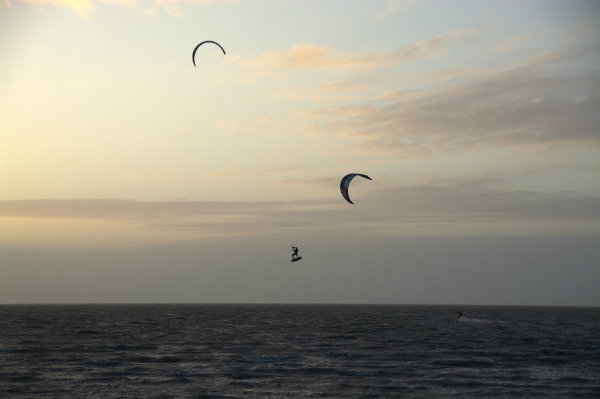Kites are part of the essential equipment for kiteboarding. As a beginner, you must select them with great care to allow you to start out comfortable and safe. Find out what you need to take into account so that you don’t make a mistake when buying.
The surface of the kite
Beginner kiteboarders need several kites as different surfaces are required. As a general rule, kites of 9 m² are preferred. However, there is no real standard. If you practice in a spot where the wind speed is between 12 and 18 knots, a kite with a surface area between 10 m² and 12 m² could be more than sufficient. However, take care to take the characteristics of your board into account, without neglecting your morphology.
Practicing in too strong or too weak wind is a common source of frustration for new kiteboarders. This explains why beginners often invest in 2 or more kites, the material to be used being chosen according to the wind range.

A kite adapted to your region and its climate
It is important to be concerned about re-launch capability when choosing your kite. Indeed, your learning will certainly result in falls into the water or onto another surface. Your kites will therefore need to allow you to re-launch the kite in the best conditions, which also depends on the climate of the region.
Hang gliders and hybrid kites are the most suitable for re-launching. They are low power and have the necessary characteristics to ensure your stability. They are also easier to control, allowing you to familiarise yourself with your equipment and your spot while progressing at your own pace.
Safety
Kite wings must always be associated with a safety device, and there are several variants of these, including control bars. The Quick Release (or QR or Quick Release System) is a good option. It gives you the possibility to release everything as the device releases the lines while holding your harness. The QR is activated via a push handle or a pull strap depending on the model. Note that push releases offer greater safety as no special effort is required.
Make sure that the safety system does not release too easily. This will prevent many accidents due to unintentional activation of the handle or strap.
Also make sure that it is easy to attach the safety system to your bar and lines. This will ensure easy navigation and avoid you having to swim to shore.
Stability
Stability is strongly influenced by the speed of the kitesurfing wings. The faster your kites rotate, the harder it will be to keep control. Nevertheless, you will certainly want to try new jumps as you progress. So you need kites that are easy to handle and reliable enough to introduce you to new tricks.
Pay attention to the depower, which must be solid. More specifically, this means that the kite must respond to your commands by stopping lifting/dragging depending on whether you let go or pull on the bar. The power must be there even in light wind so that you feel confident.
The different types of kites
The freestyle wings are recognisable by their 5 battens and 5 lines associated with a C shape. Their handling requires a certain level of practice although the range is opening up more and more to beginners. The Open C-Shape version with 4 lines is easier to handle. If you’re just starting out in freestyle, this is a good alternative, as the Open C-Shape is also suitable for intermediate to advanced freestylers.
The freeride/crossover type refers to the most popular kitesurf kites. These versatile kites have the advantage of being accessible and guarantee a good upwind ride. Recognizable by their delta shape, they have a low aspect ratio which is as practical in freeride as it is in big air.
As their name suggests, wave wings are intended for use in waves. The rounded shape of these wings has a low aspect ratio. Stability is perfectly maintained during descents in the wind when you practice in side-shore (wind parallel to the beach) or onshore (wind from the sea to the land, at a 90° angle) spots. The wave kites are designed to allow for rotation without the need for you to pull. On the other hand, kitesurfing jumping capacities are limited.
The light wind kites are single-slat. They are designed to allow take-offs without the need for strong wind. Stability and power are combined with easy handling and lightness, which mainly appeal to twintip and foil enthusiasts.
Your first kitesurf kites will be chosen according to your morphology, your board and the specificities of the spot. Add to this an uncompromising stability and an excellent level of safety to guarantee fun and safe sessions. Don’t forget that the type of kite you choose will also depend on the use you plan to make of it.